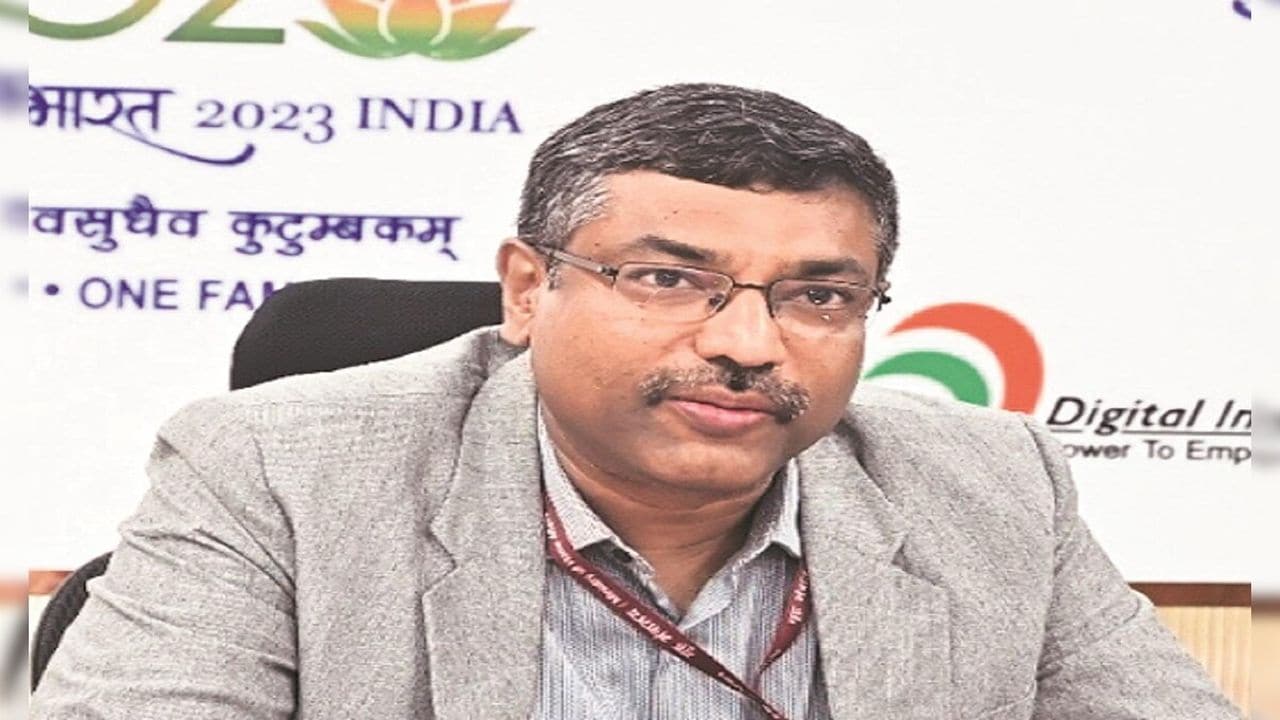Advertisement|Remove ads.
Transfer of technology and local design ecosystem central to Electronics Component Manufacturing Scheme: MeitY Secretary
The Electronics Component Manufacturing Scheme (ECMS) is gaining strong traction, with industry proposals highlighting India’s growing appeal as a hub for electronics design and manufacturing. MeitY is carefully vetting submissions while building local capacities to ensure foreign and domestic companies contribute to a thriving technology and design ecosystem.

The Electronics Component Manufacturing Scheme (ECMS) has received an overwhelming response from the industry, reflecting strong interest in expanding India’s electronics ecosystem.
A key focus of the scheme, S Krishnan, Secretary at the Ministry of Electronics and Information Technology (MeitY), told CNBC-TV18, is fostering transfer of technology and developing a local design ecosystem.
“Design is again a key area. Many companies, even without direct incentives on design, are coming into the country simply because India is one of the best countries in the world to design in. There are enough STEM human resources available to enable the design,” Krishnan said.
The ministry is currently vetting proposals submitted under the scheme. While both the government and industry are eager for quick progress, Krishnan emphasised that the technical team is working efficiently and that it is important not to rush implementation. “There is a technical team which looks at all this. Beyond that point, we should not put too much pressure on them to say that we want it by so-and-so date. Everyone is in a rush. Industry also wants to get started quickly. The government, of course, wants it to move very fast, and the technical team is in place and working on it,” he added.
Krishnan stressed that the ECMS is a step-by-step initiative, beginning with assembly under existing PLI schemes and gradually moving into manufacturing critical components. He highlighted that alongside human resources, the government is building capacities across the country to support the electronics ecosystem. “It will naturally follow that foreign companies participating will also contribute to the design and development of local partners,” he said.
The ECMS is seen as a strategic move to strengthen India’s position in global electronics manufacturing, while nurturing domestic talent and promoting self-reliance in critical components. By focusing on technology transfer and local design capabilities, the scheme aims to create a robust ecosystem that benefits both domestic and international players.
Watch accompanying video for entire conversation.
A key focus of the scheme, S Krishnan, Secretary at the Ministry of Electronics and Information Technology (MeitY), told CNBC-TV18, is fostering transfer of technology and developing a local design ecosystem.
“Design is again a key area. Many companies, even without direct incentives on design, are coming into the country simply because India is one of the best countries in the world to design in. There are enough STEM human resources available to enable the design,” Krishnan said.
The ministry is currently vetting proposals submitted under the scheme. While both the government and industry are eager for quick progress, Krishnan emphasised that the technical team is working efficiently and that it is important not to rush implementation. “There is a technical team which looks at all this. Beyond that point, we should not put too much pressure on them to say that we want it by so-and-so date. Everyone is in a rush. Industry also wants to get started quickly. The government, of course, wants it to move very fast, and the technical team is in place and working on it,” he added.
Krishnan stressed that the ECMS is a step-by-step initiative, beginning with assembly under existing PLI schemes and gradually moving into manufacturing critical components. He highlighted that alongside human resources, the government is building capacities across the country to support the electronics ecosystem. “It will naturally follow that foreign companies participating will also contribute to the design and development of local partners,” he said.
The ECMS is seen as a strategic move to strengthen India’s position in global electronics manufacturing, while nurturing domestic talent and promoting self-reliance in critical components. By focusing on technology transfer and local design capabilities, the scheme aims to create a robust ecosystem that benefits both domestic and international players.
Watch accompanying video for entire conversation.
Read about our editorial guidelines and ethics policy

/filters:format(webp)https://news.stocktwits-cdn.com/large_Palantir_jpg_d29fd424cd.webp)
/filters:format(webp)https://news.stocktwits-cdn.com/shivani_photo_jpg_dd6e01afa4.webp)
/filters:format(webp)https://news.stocktwits-cdn.com/large_coinbase_new_jul_2eaf8eb2ac.webp)
/filters:format(webp)https://st-everywhere-cms-prod.s3.us-east-1.amazonaws.com/Prabhjote_DP_67623a9828.jpg)
/filters:format(webp)https://news.stocktwits-cdn.com/large_stellantis_ram_truck_OG_jpg_78d19a0ac9.webp)
/filters:format(webp)https://st-everywhere-cms-prod.s3.us-east-1.amazonaws.com/large_sealsq_stock_market_representative_resized_b05435011f.jpg)
/filters:format(webp)https://st-everywhere-cms-prod.s3.us-east-1.amazonaws.com/unnamed_jpg_9dff551b50.webp)
/filters:format(webp)https://news.stocktwits-cdn.com/large_nvidia_logo_OG_jpg_127f9961ef.webp)
/filters:format(webp)https://images.cnbctv18.com/uploads/2025/10/drishti-ias-2025-10-b2c6f076ec8eb54d4877c3b0eef0771b.jpg)
/filters:format(webp)https://st-everywhere-cms-prod.s3.us-east-1.amazonaws.com/cnbctv18logo.png)